Stonehenge. The word conjures up visions of thousands of slaves struggling to set giant stone lintels atop colossal standing stones. Of Druid priests in flowing white robes performing ultra-secret rituals within the sacred circle. Of summer and winter solstices, when sunbeams pierced the precisely spaced stones and fell on the monolithic sandstone altar, alerting priests to the shift of seasons.
I couldn’t leave England without seeing this iconic site and my friend, Heather Cowper, who so graciously let me camp out at her house in Bristol, offered to be my chauffeur for the day. Shortly before the 9 a.m. opening hour we stood at the head of the queue, hoping to get photos before the swarms of tourists descended. English Heritage, the organization charged with managing the site, had agreed to grant us access slightly before the official opening time. We had about a three minute head start on the crowd but by the time we made it around to the far side, where the light was good enough for photos, people were already congregating.
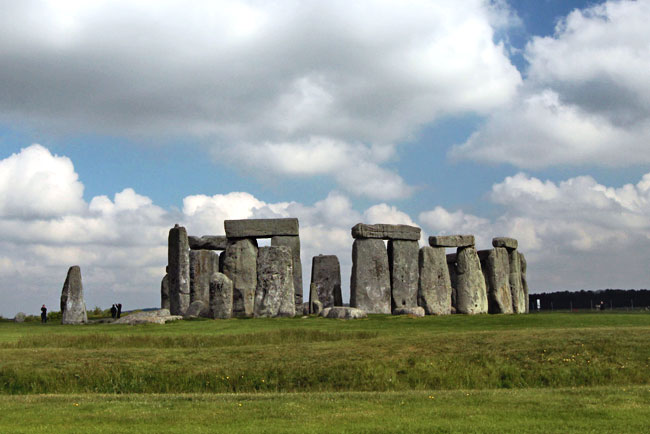
I was disappointed. In addition to the crowds, the walking path is so far away from the site that it’s difficult to conceive of the immensity of the stones or the tremendous undertaking it must have been to raise them. Stonehenge seemed less significant, less imposing than I had expected. Hoping that the audio guide would provide inspiration, I put away my camera, donned the headphones, and retraced my steps to the beginning of the self-guiding tour.
I learned immediately that Stonehenge was never a Druid site. This false belief likely stems from the work of William Stukeley, author of the 18th century book, Stonehenge, A Temple Restor’d to the British Druids. In it, he correctly deduced that the site had been constructed by residents of ancient Britain, rather than Romans or Danes. He also recognized the standing stones as a temple used by priests and Druids were the only priests Stukeley knew about. In actuality, Druids didn’t appear until more than a thousand years after Stonehenge was abandoned, but by the time archeologists had set the record straight the myth had become ingrained in Stonehenge lore.
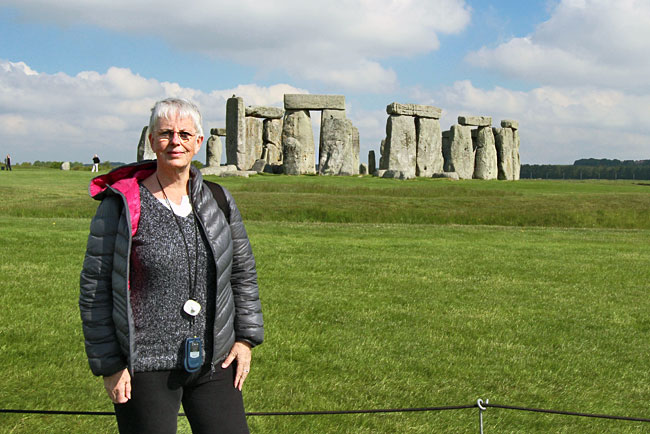
Through radiocarbon dating, we know that the first phase of Stonehenge, a roughly circular enclosure about 360 feet in diameter, was built between 3000 and 2920 B.C.. Initially it was a simple ditch surrounded by a high bank formed from excavated native chalk. Today the grass-covered mound and ditch are still visible but back then it would have shone brilliant white in the sunshine. It was painstakingly dug with simple tools like deer antlers and ox jawbones and the chalk was likely moved with baskets or skins. In its earliest form, Stonehenge was nothing special. It was just another circular enclosure, one of many built around the same time. But then the stones began to arrive.
The largest standing stones, some of which weigh more than 44 tons, are known as sarsens. These giant slabs of extremely hard sandstone are only found 19 miles to the north. Experiments have shown that they could have been dragged to the site by 200 people pulling a sledge running on wooden rails. Less easily explained are the 80+ bluestones, some of which weigh nearly six tons, that were brought from the Preseli Hills of Wales, approximately 150 miles away. How they were transported, and why, is one of the enduring secrets of Stonehenge. Whatever the reason, by 2000 B.C. the stones had been raised and secured in place using techniques borrowed from carpentry: tongue-and-groove joints were employed between lintels, while mortice-and-tenon fittings (a protruding peg on the top of each upright that fit into a corresponding hollow on the bottom of each lintel) were used to secure lintels to the top of the upright stones.
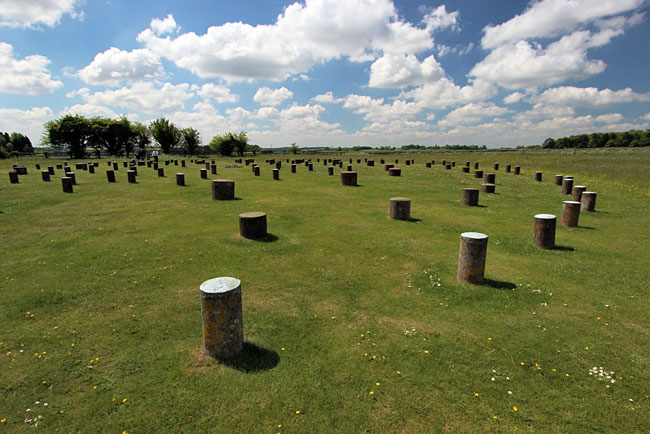
As I listened, I was struck by the enormity of the task of building such a structure with only rudimentary tools and brawn. I imagined the plain crawling with workers and could almost hear the stone masons chipping away the last rough edges, ensuring an exact fit. But why it was built and what it was used for is still in question. Even today, we are not certain. Flat plains stretch away from it in all directions, thus it was not built for defensive reasons and there is no evidence that it was ever lived in. Archeological excavations have confirmed that it was a burial site for males with a higher social ranking. As I studied the stones it occurred to me that they don’t look much different from many present-day above ground tombs I have seen all over the world. Stonehenge could have been a cemetery, but a cemetery would not explain the unique alignment of the site.
On mid-summer solstice, the longest day of the year (June 21), the first rays of the rising sun pierce the opening between the standing stones and illuminate the heart of the stone circle. On mid-winter solstice (December 21), the shortest day of the year, the setting sun does the same, albeit from the exact opposite direction. Could Stonehenge have been an astronomical observatory? And if so, why were there ritual burials at the site. One explanation may be that the people were farmers, reliant on nature for the success of their crops. A bounteous harvest meant living through the harsh winter, thus knowing when to plant was a matter of life and death. Stonehenge was the tool they created to mark the start of the growing season, and with life and death so inextricably intertwined in ancient civilizations it may have been seen as the most appropriate place to bury their dead.
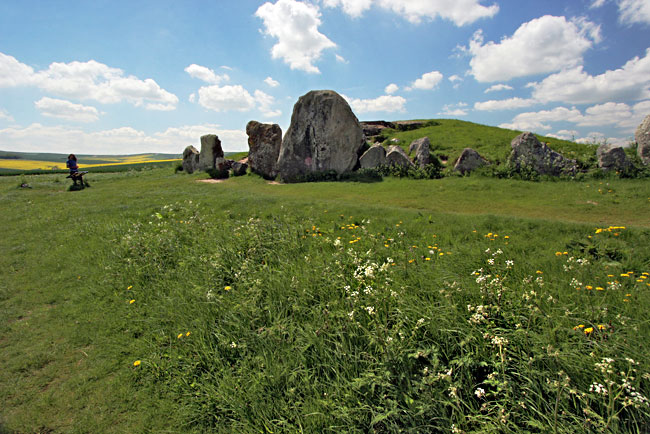
I was still wondering about the raison d’etre for Stonehenge when we climbed back in the car. Could the alignment be a mistake or serendipitous accident? Perhaps, except for the fact that other temples in the same vicinity, built around the same time, share the exact same orientation. Heather and I headed for Woodhenge, the other “henge” managed by English Heritage. Like Stonehenge, this second site is composed of a bank with a ditch on the inner side, which was entered by a causeway on the northeast. Inside the ditch, a series of wooden poles created six concentric oval rings, with the long axis pointing to the rising sun on mid-summer solstice. Today, concrete posts mark the position of the original timbers, which are thought to have defined a ceremonial space.
Further afield we stopped at West Kennet Long Barrow, a chambered tomb of earth and stone built by Neolithic people as much as 500 years before Stonehenge was begun. At more than 325 feet in length, it is one of the longest barrows in Britain and it is estimated that it required more than 15,000 man-hours to construct. Originally sealed by massive sandstones sarsens, the six excavated burial chambers are now open for exploration. The site is best understood in the context of the surrounding landscape. Experts agree that it is part of a complex of sites that were linked by roads and stone markers. Indeed, from the entrance to the barrow, one need only look to the north to see Silbury Hill, a 131-foot high chalk mound that rivals the size of some of the smaller Egyptian pyramids and is the highest prehistoric man-made mound in Europe.

A mile beyond Silbury Hill was our final stop of the day, Avebury Ring. Like Stonehenge, this Neolithic henge monument features an enormous bank and ditch, within which standing stones have been erected. Unlike Stonehenge, visitors to Avebury are welcome to walk among the stones, touch them, crawl on them, meditate beneath them, or conduct drum circles around them, and on the day we visited people were doing all of the above. The outer circle originally held 98 sarsen stones, some of which weighed more than of 40 tons. Two smaller circles of stones stand within the larger circle and an avenue of standing stones lead to the site, making it the largest prehistoric stone circle in the world.

It would not be proper to say that the standing stones are located in the village of Avebury. Rather, they surround the village. Or I should say what is left of the village. By the mid-19th century, most of the Avebury stones had disappeared. Many were buried in the 14th century by locals who feared the old pagan ways. Those that remained were gradually broken up and used in construction. The village grew up around and within the original stone circles. In 1934, archaeologist Alexander Keiller bought the village in its entirety and began digging up and restoring the stones. Buildings, trees, and fences within the boundary of the circles were either destroyed or moved. In essence, Keiller relocated most of the town. Though his tactics may have been unorthodox, without his vision, one of the greatest Neolithic sites in the world might have been lost forever.
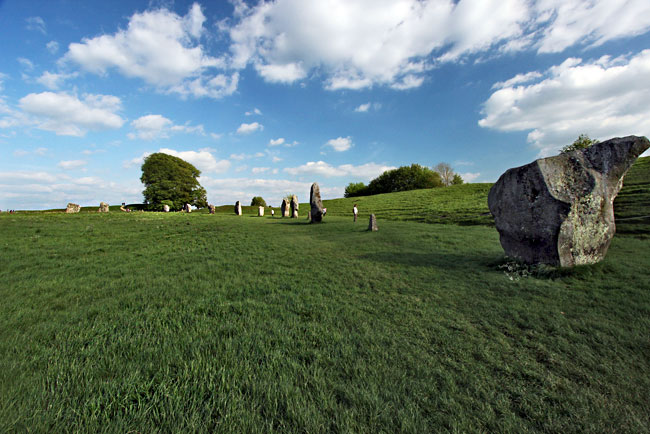
Perhaps because of the ease of access, Avebury has become a favored worship site with present-day adherents of pagan religions. On summer solstice Druids conduct an elaborate ceremony that includes poems, singing, and ritual offerings to the Goddesses, while New Age proponents have been observed using dowsing rods to search for psychic emanations. I chuckled when I read that. Nearly 5000 years old and the sites that comprise Stonehenge, Avebury, and Associated UNESCO Sites World Heritage properties are still being worshiped.
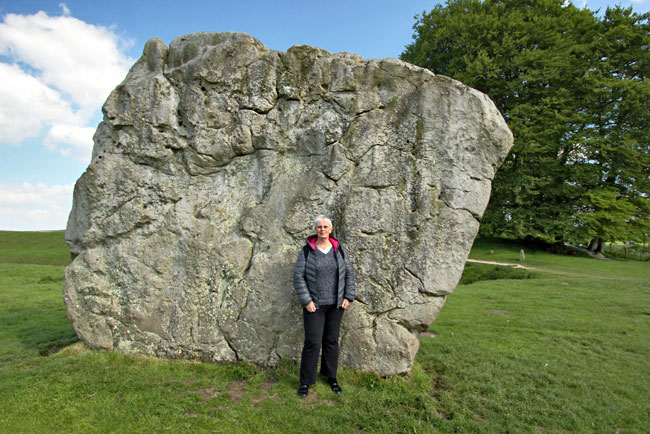
Author’s note: Stonehenge is definitely worth a visit, but if you have time to see only one make it Avebury, where you can still get up close and personal with the standing stones. For more information about Stonehenge, Avebury, Woodhenge, or any of the numerous historic sites, visit the official tourism site for Wiltshire, England at Visit Wiltshire or download the app here.

I should also commend you on a very well written and engaging blog. Thank you.
Thanks again Macey – it is very kind of you to say so.
The Stonehenge site is open to the public twice a year on the solstice. During this time you can walk amongst the stones without any restriction whatsoever. Thousands of people congregate there, especially during the summer solstice, where drum circles are commonplace. If you can time your visit to coincide with this ‘festival’ your experience will be very different..
Having said this, Avebury has a unique charm of it’s own and in my opinion is a better site, and much older – although less visually impressive.
Thank you for sharing this information Macey – I had no idea!
Great tips and thanks for clearing up the Druid-Stonehenge myth. I understand your disappointment when visiting Stonehenge, I had the same when I saw the walking path so far from the stones.. but at the same time I understand the reasons behind it.
Sadly, Franca, so do I. It was hard to believe that someone actually spray painted graffiti on the stones at one point.
Thanks for clearing up the Druid-Stonehenge myth and for providing great insight into the ancient sites around England. I think I’ll skip Stonehenge for the lesser visited sites. I’d love to be in Avebury when a drum circle is happening.
Hi Mary: They say that the new age Druid groups come here to do a big ceremony every Easter – that would be really interesting to see.
Wow, good tips and a great rundown of places to see! Stonehenge has always been on my bucket list, but I had no idea that was as close as you could get! I would have been equally disappointed. I know it’s for good reason, yadda, yadda, I know all those things in my head, but I still want to get right up next to it!
Me too, Jean. In my head, I can tick off all the good reasons for keeping people away, but I just wanted to be up close. There is an application process for early morning and late evening visits when up to 26 people are allowed inside the stone ring, but there is so much demand that you have to book way in in advance for that option.
Hi Barbara! I’ve been to England (London) just once and one of the places I didn’t get a chance to visit was the stonehenge. Hopefully it wouldn’t be as crowded when I go.
Hi Jam: If you want to avoid crowds, I suspect the off season is a much better bet.
Just discovered your blog. Love it and love your photography! Just incredible images. Would love to hear all about your camera equipment and what you travel with. What kind of camera do you have, what lenses do you typically use and travel with, etc. What kind of camera bag do you use? I am trying to learn photography and am planning a trip to Europe next spring would love to hear about your camera equipment and tips for managing it while traveling.
Hi Nanette: Thanks so much for the wonderful compliment. I love to hear when someone appreciates what I do. As for the equipment I use, the best thing to do is to refer to my Pinterest Board where I’ve listed all the gear I use: http://pinterest.com/holeinthedonut/products-i-love. Hope that helps for your upcoming trip!
I’ve read the Wikipedia entry for Stonehenge and I almost fell asleep halfway through haha. But this is such a mesmerizing read — chockful of insight and important bits of history! Thank you so much for sharing! Cheers.
Thanks Christopher! That’s a really nice thing to say 🙂
A friend took us to Avebury when we visited England several years ago. Loved it. I agree it is more interesting than Stonehenge.
Hi Donna. It really is amazing that so few people know about it, compared to Stonehenge. So glad you got to see it as well.
I’m really digging (pun intended) your posts! Today’s the first time to your blog and I’m eating it all up! I’m getting more and more excited for my UK trip thanks to your lovely, informative articles! I had no idea there was anything else besides Stonehenge…the stones at Avebury look really incredible, even more moving.
Hi Tiana: If you get the chance, don’t miss Avebury. I recommend it, even over Stonehenge. And thanks for the kind words about my blog.
You can still have free run of Stonehenge.
http://www.english-heritage.org.uk/daysout/properties/stonehenge/stone-circle-access/
Thanks for pointing this out Sheila. I knew about it, but was working directly with English Heritage and they didn’t get back to me until the very last moment, so there was no time to go through normal channels. Unfortunately, there’s such a waiting line for these early morning or evening visits that you have to do it well in advance.
The first time I went to Stonehenge you could wander very close to the stones but it loses all its majesty being so far away with ropes and all. I agree that Avebury is a lot more pleasant to visit and quieter and less crowded too.
Mark, how I envy you for visiting during the days when you could actually wander among the stones. I see a day when the same will be true for Avebury. Unfortunately.
The stones of Avebury look amazing. I wish I had known of them when I was in the area several years ago. The history is so interesting. About Stonehenge — have they moved the walking path? In my memory, we were able to get a lot closer in some places. But… it might just be the way I remember it. 🙂
Hi Cathy: I’ve never been there before, so I don’t know if the walking path has been moved but it’s far enough away that, in my opinion, it negatively impacts the experience.